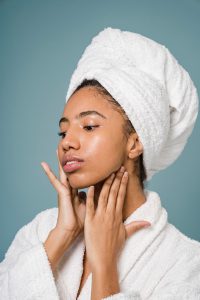Pro Tips For Healthy Hair

Is it essential to consider the porosity of my hair, what type of hair I have, or which shampoo is appropriate? To answer these queries, top hairstylists and colorists are in together.
Every individual has distinctive body chemistry that is influenced by weather conditions as well as environmental factors such as exercise routine and naturally occurring hair texture, all of which result in a recommended frequency for washing your strands.
Finding equilibrium is tricky. Keeping our hair healthy and growing requires some natural oils, though if we simply refrained from shampooing altogether, it would take around three months for the scalp’s balance to readjust; most people shy away from this path.
On the other hand, not cleansing your hair frequently enough causes grease and debris buildup, which can lead to dandruff or greasy tresses.
The frequency with which you should shampoo your hair is highly dependent on its porosity. Do you want to test out how porous your tresses are? Take the “float” test! All it takes is filling a container with water and dropping one strand of our mane into it, then waiting for a few minutes before checking back. If the strand sinks quickly, congratulations!
High-porosity strands are what you possess! But if the lock hovers above, low-porosity locks have made their presence known here.
Porosity determines whether moisture can be rapidly soaked up or not; those blessed with high porosity will find that they absorb humidity more easily than others do. Hair with low porosity has a difficult time retaining moisture, and product buildup are much more likely. Therefore, it’s generally necessary to shampoo hair of this type much more often than high-porosity locks.
Immediate Solution
No matter your hair type, this pre-shampoo serum will leave it looking luminous and feeling bouncy with a noticeably improved texture. Before shampooing, treat your locks to the protection of this layer that forms around them; so you don’t lose too much moisture in the washing process!
Finding the Perfect Washing Schedule for Your Hair Type
Thin or Straight Hair
Cleanse every other day, or as frequently as needed.
Sleeker, thinner locks tend to be more easily saturated with sebum, resulting in a faster accumulation of grease on the hair and scalp when compared to curly or thicker varieties.
Try these:
Wavy or Curly Hair
Cleanse every two or three days.
Because oil doesn’t adhere to this particular hair type well, it often results in dryness. Thus, reducing your wash frequency is essential since the natural oils of your tresses are critical; you need more moisture for smooth and frizz-free locks.
Try these:
Textured Hair
Cleanse every five to seven days.
For individuals with textured hair and tighter coils, the same principle applies even more so: you can typically go five to seven days between washes due to a drier scalp. With these hair types being coarser, it’s important that they are properly taken care of for long-lasting results.
Try these:
Highlighted or Color-Treated Hair
Cleanse every three to four days.
Color-treated hair is often more damaged due to the processing, so by limiting shampooing, your natural oils will help mend it. This allows for a longer-lasting and vibrant color that appears freshly done at all times!
Try this:

Uncover Expert Hair Care Advice!
1. Super Wet Hair
For shiny, strong hair, try this age-old tip from trichologist Phillip Kingsley! Before you shampoo your scalp and hair, be sure to thoroughly wet the entire area; otherwise, it’ll be more difficult to rinse out all the suds, which can lead to product buildup that dulls shine.
2. Delicately Exfoliate
To begin your shampooing ritual, take a quarter-sized amount of product and combine it with water in your palms. Start at the nape of the neck and massage it into your scalp using small circular motions to avoid any uncomfortable knots.
Your scalp is where oils are created, so focus on this area to ensure all dirt and debris are removed thoroughly. Then let the liquid run down the length of your hair—there’s no need to overwork!
3. Conditioner
Applying conditioner only in the areas where you need it (some people will require it all over their scalp, others just at the ends, and some mid-lengths to ends) can help ensure that your hair gets the nourishment it needs. Leave the conditioner on for a few minutes so that your strands have time to soak up its benefits fully. Make sure to thoroughly rinse away any excess product residue before styling, as this could cause damage or premature breakage.
Try these:
4. Finish Using Cold Water
For optimal hair health, switch between warm and cool water. Hot water may open the shaft of your hair, leading to dryness, damage, and frizziness; whereas cold water can lock in moisture while sealing the cuticle for a smooth finish without pesky frizz.
5. Dry Shampoo
Don’t overdo it with washing your hair—too much can strip the natural oils and leave you dealing with an oilier scalp. To avoid this, use dry shampoo to help extend the time between washes and prevent a buildup of excess oils.

